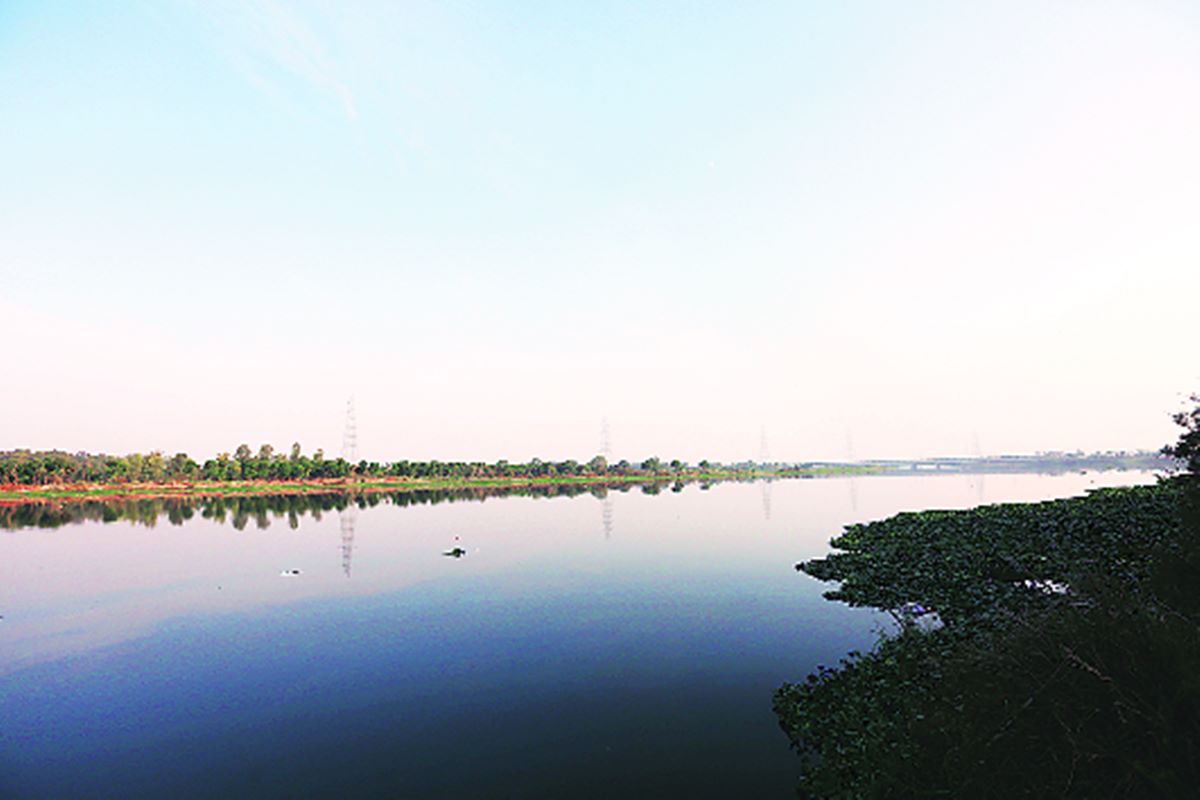 The riverbank area comes under the DDA’s Yamuna Riverfront Development plan, and the Garden will come up as part of it, said an official. Gajendra Yadav
The riverbank area comes under the DDA’s Yamuna Riverfront Development plan, and the Garden will come up as part of it, said an official. Gajendra YadavTrees and shrubs along the western banks of the Yamuna will make way for the New India Garden or Nav Bharat Udyan as part of the Central Vista Redevelopment project. Officials said the garden will be constructed in a way to avoid monsoon floods.
The riverbank area comes under the Delhi Development Authority’s (DDA) Yamuna Riverfront Development plan, and the Garden will come up as part of it, said the official.
The area cuts off from the Ring Road into an area with dense vegetation — mostly trees and shrubs, lacking human habitation.
As part of the plan to extend the Central Vista axis from its current 2.9 km to 6.3 km, the Garden will be constructed over 20.22 acres of area south of the Pragati Thermal Power Plant near the Purana Qila and Bhairon Marg.
The Central Public Works Department (CPWD) in a design competition for an “iconic structure” which can be three times as high as the India Gate, stated that it should be designed keeping in mind the foundation of “sandy soil with high water table”, and factors such as “soil stability, wind velocity, seismic forces and vulnerability to flooding”.
On December 17, the Ministry of Housing and Urban Affairs and CPWD organised a webinar for interested parties seeking to know more or enter the design competition, where the various guidelines were discussed. Till date, 223 entries have been received by the CPWD for it, largely from Delhi with 44 entries. The iconic structure will come up closer to the Ring Road.
“The garden shall not extend all the way to the river and will be situated above the flood lines there, as there is an embankment running parallel 50 metres from it. The area contains plantations. The vegetation there will be removed for the project,” said the official.
As part of the Yamuna Riverfront Development the banks are to be converted to forests and wetlands, as stated by LG Anil Baijal recently in a tweet.
Plum trees, guavas, eucalyptus, jamun, mulberry, and saccharum munja, typha and other forms of grass and shrubs are found along the floodplains of the river, said Faiyaz Khudsar, scientist-in-charge of the Yamuna Biodiversity Park and a professor at the Delhi University.
“The riverbanks experience huge floods once every 15-20 years, when entire floodplains are covered for around a fortnight. Native species of plants tend to survive floods, such as jamun trees,” he said.
Construction of other aspects of the garden has not begun yet. The final design for the “iconic structure” will be chosen through a competition and will be announced in the last week of December.